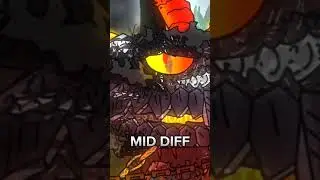The Spiders in Your House - The Zebra Jumper
A close look at Salticus scenicus, the Zebra jumping spider. I look into how they'll behave in your home, plus the stuff about jumping spiders in general that is hard to believe, but true nonetheless.
Unless otherwise credited, all photos and videos herein are my own.
Support me on Patreon (and get exclusive content)!
https://www.patreon.com/user?u=86046992
Follow me on Twitter:
www.twitter.com/travismcenery
Check out Sarah Rose's "Spiders of North America", the first book I reach for when identifying spiders (I earn a small commission if you purchase through these links).
In the United States: https://amzn.to/3LV5jOo
In Canada: https://amzn.to/3LPfB2o
Creative Commons licenses used:
https://creativecommons.org/licenses/...
Map used:
https://gisgeography.com/high-resolut...
References
Chen A, Kim K, Shamble PS (2021). Rapid mid-jump production of high-performance silk by jumping spiders. Current Biology 31(21): R1422-R1423
Chen Y-K, Liao C-P, Tsai F-Y, Chi K-J (2013). More than a safety line: jump-stabilizing silk of salticids. Journal of the Royal Society Interface 10:20130572. http://dx.doi.org/10.1098/rsif.2013.0572
Dill LM (1975). Predatory behavior of the zebra spider, Salticus scenicus (Araneae: Salticidae). Canadian Journal of Zoology 53(9):1284-1289.
Foelix R (2011). Biology of Spiders. Oxford University Press, New York, NY
Hill DE (2006). Targeted jumps by salticid spiders (Araneae, Salticidae, Phidippus). Version 9: 1-28.
Hill DE (2007). Use of location (relative direction and distance) information by jumping spiders (Araneae, Salticidae, Phidippus) during movement toward prey and other sighted objectives. Peckhamia 83(1):1-103.
Hill DE (2016). Jumping spiders in outer space (Araneae: Salticidae). Peckhamia 146:1-7
Jacques AR, Dill LM (1980). Zebra Spiders May Use Uncorrelated Asymmetries to Settle Contests. The American Naturalist 116(6):899-901
Land MF (1985). The Morphology and Optics of Spider Eyes. Neurobiology of Arachnids: 53-78.
McKeown N, Vetter R, Hendrickson R (2014). Verified spider bites in Oregon (USA) with the intent to assess hobo spider venom toxicity. Toxicon 84:51-55.
Okuyama T (2007). Prey of two species of jumping spiders in the field. Applied Entomology and Zoology 42(4):663-668.
Rose S (2022). Spiders of North America. Princeton University Press.
Rößler DC, De Agro M, Biundo E, Shamble PS (2021). Hanging by a thread: unusual nocturnal resting behaviour in a jumping spider. Frontiers in Zoology 18:23. https://doi.org/10.1186/s12983-021-00...
Rößler DC, De Agro M, Kim K, Shamble PS (2022). Static visual predator recognition in jumping spiders. Functional Ecology 36:561-571. https://doi.org/10.1111/1365-2435.13953
Rößler DC, Kim K, De Agro M, Jordan A, Galizia CG, Shamble PS (2022). Regularly occurring bouts of retinal movements suggest an REM sleep-like state in jumping spiders. Proceedings of the National Academy of Sciences 119(33):e2204754119
Roscoe DT, Walker G (1991). The adhesion of spiders to smooth surfaces. Bulletin of the British Arachnological Society 8(7):224-226.
Russell F (1970). Bite by the spider Phidippus formosus: case history. Toxicon 8:193-194.
Vetter R, unpublished data.
Wolff RJ (1986). Scavenging by Jumping Spiders (Araneae: Salticidae). The Great Lakes Entomologist 19(2):121-122.







